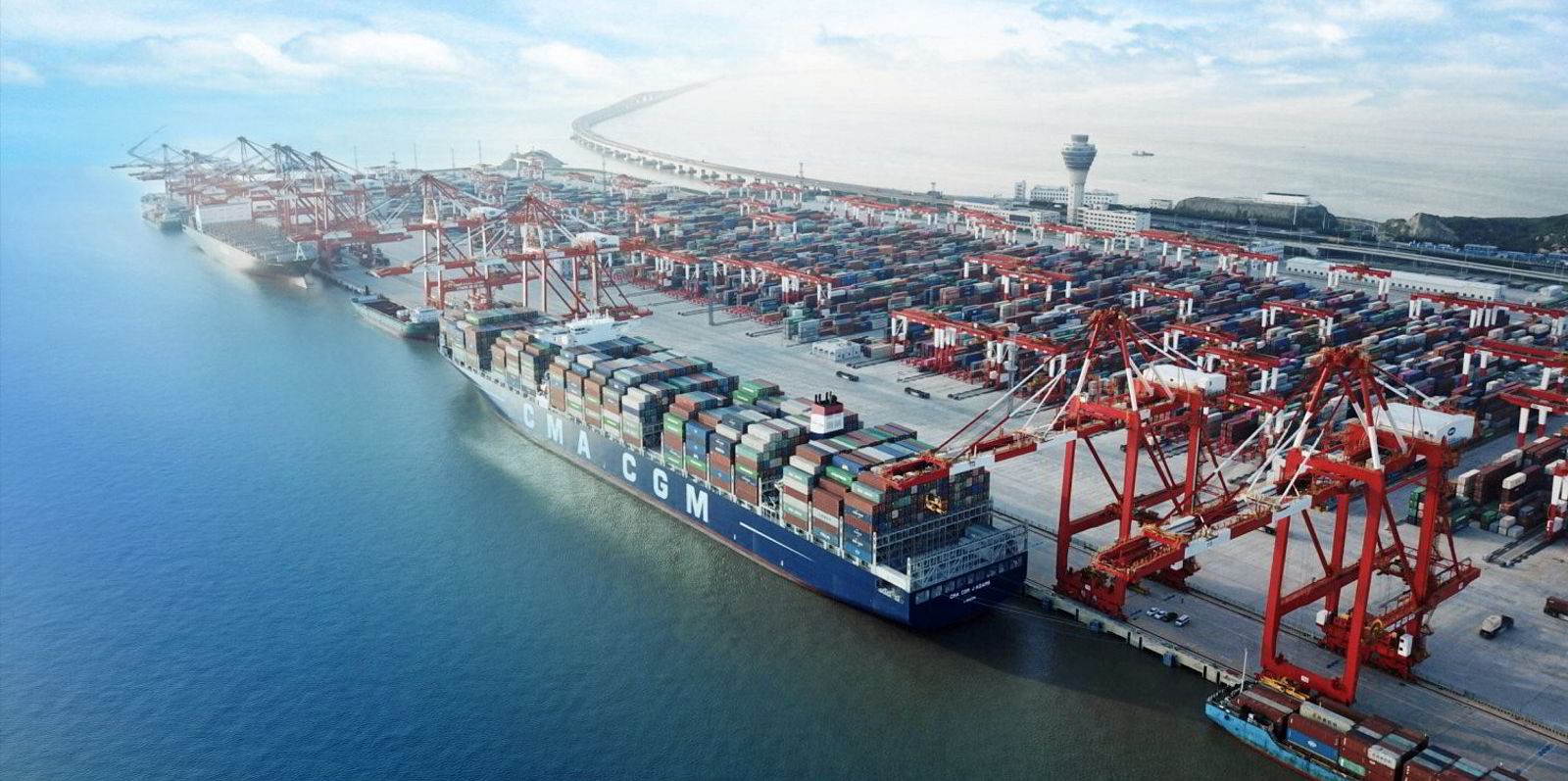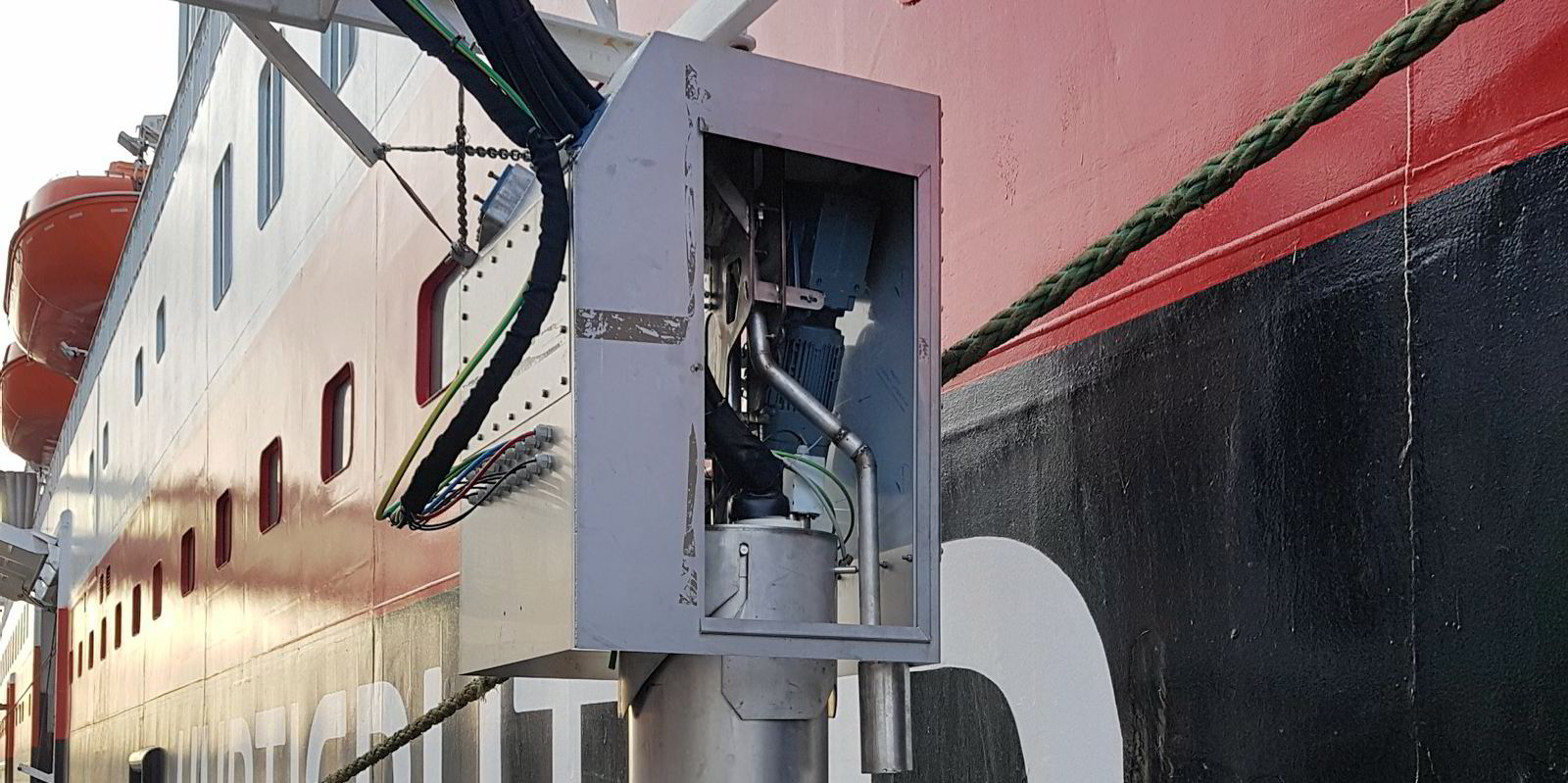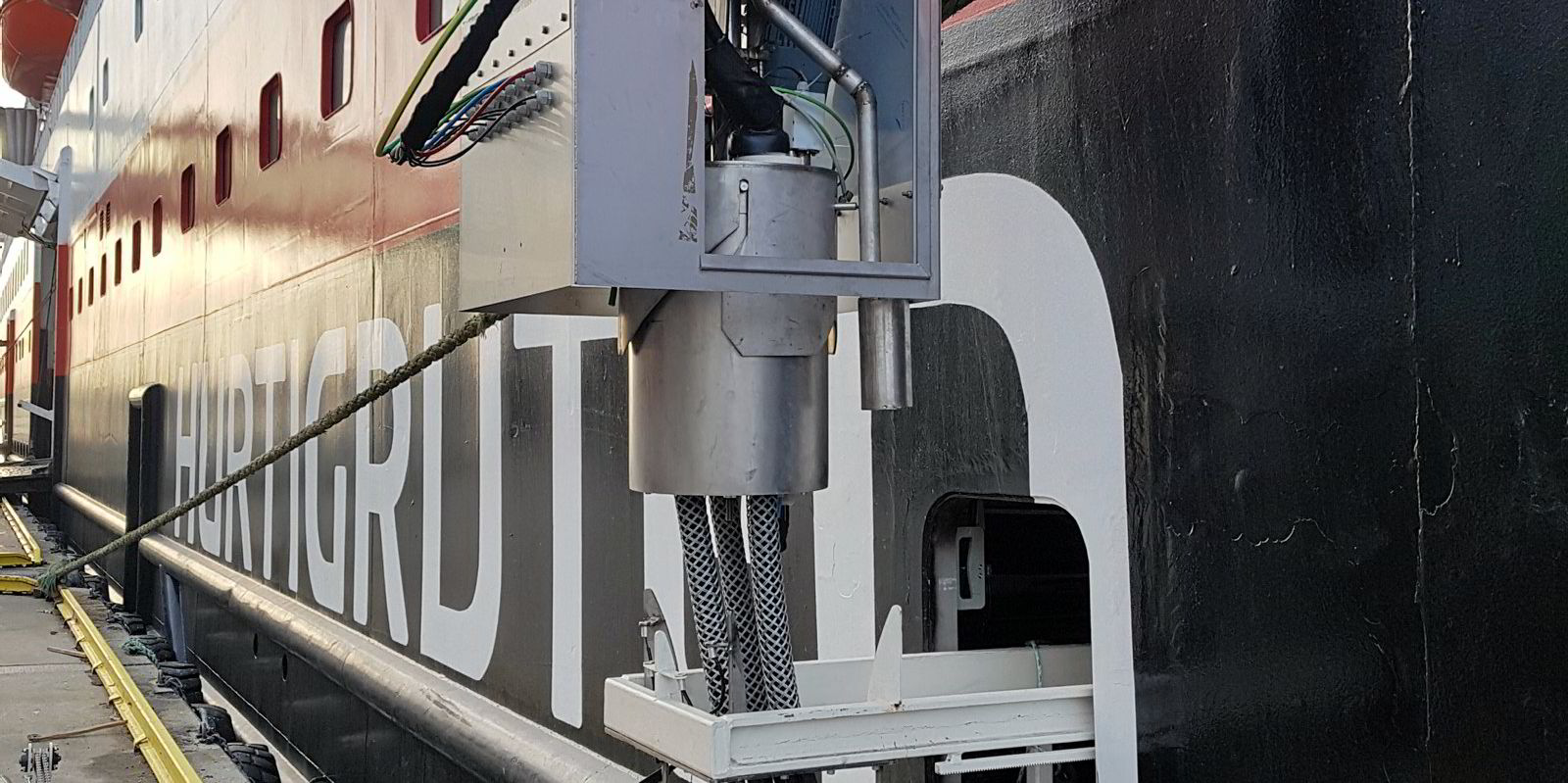French liner operator CMA CGM Group and Shanghai International Port Group will collaborate on a project to scale up use of “cold ironing” technology, the use of onshore power supply for container ships at the Port of Shanghai.
The two companies signed the long-term strategic collaboration on Thursday. Effective immediately, all fully-fitted CMA CGM container ships calling at Shanghai will use the onshore power connection.
CMA CGM and SIPG completed technical trials of the “cold ironing” facilities of Yangshan Terminal in the Port of Shanghai in November.
CMA CGM said most of its recent vessels are equipped with the technology required to use “cold ironing”, and the company is conducting an extensive retrofitting program so that other container ships can also use an onshore power supply.
By the end of 2022, 13 CMA CGM vessels calling at the port of Shanghai will connect to the onshore power supply, and by mid-2023, this number will increase to 50.
Ludovic Renou, chief executive of CMA CGM China, commented: “CMA CGM is steadfastly committed to installing more environmentally responsible solutions on board our vessels, the group supports cold ironing and we will continue to equip our fleet accordingly.
“We are breaking new ground by partnering with SIPG, our strategic partner, to collaborate on the mass scale cold ironing.”
Allowing ships to shut down auxiliary engines and use an onshore power supply while at berth, “cold ironing” eliminates sulphur oxide, particulate matter, and nitrogen oxide emissions, significantly improving air quality while also reducing noise pollution.
A joint report issued this week by Solutions For Our Climate, a nonprofit organization promoting more effective climate action and energy transition based in Seoul, and Pacific Environment, a global organisation dedicated to protecting communities and wildlife of the Pacific Rim, noted that the more than 45,000 ships that enter and leave the Busan Port annually are responsible for 94.79% of the port’s air pollution, according to a South Korean government report, Busan Port’s SO2 and NO2 concentration is higher than that of Busan city.
Leading ports around the world are installing shore power facilities at berths, although their usage is not mandated.
One exception is the US State of California, where a report issued this year by the California Air Resources Board has shown that the mandatory “cold ironing” policy was effective in helping to save hundreds of lives, prevent millions of cases of cancer and save over US$2.31 billion in public health benefits.
Wenbin Luo, general manager of SIPG’s engineering and equipment Department of SIPG, said the port operator “has always been committed to the development of green ports and has always supported the energy transformation and decarbonisation of shipping.”
“This year, SIPG and CMA CGM jointly established the LNG bunkering Center at Shanghai Port. Today, SIPG and CMA CGM have confirmed the long-term strategic cooperation of cold ironing, and SIPG will continue to provide onshore power supply services for CMA CGM vessels at Shanghai Port.
“We firmly believe that enhanced cooperation between ports and shipping companies will accelerate the journey of decarbonisation,” Luo said.





